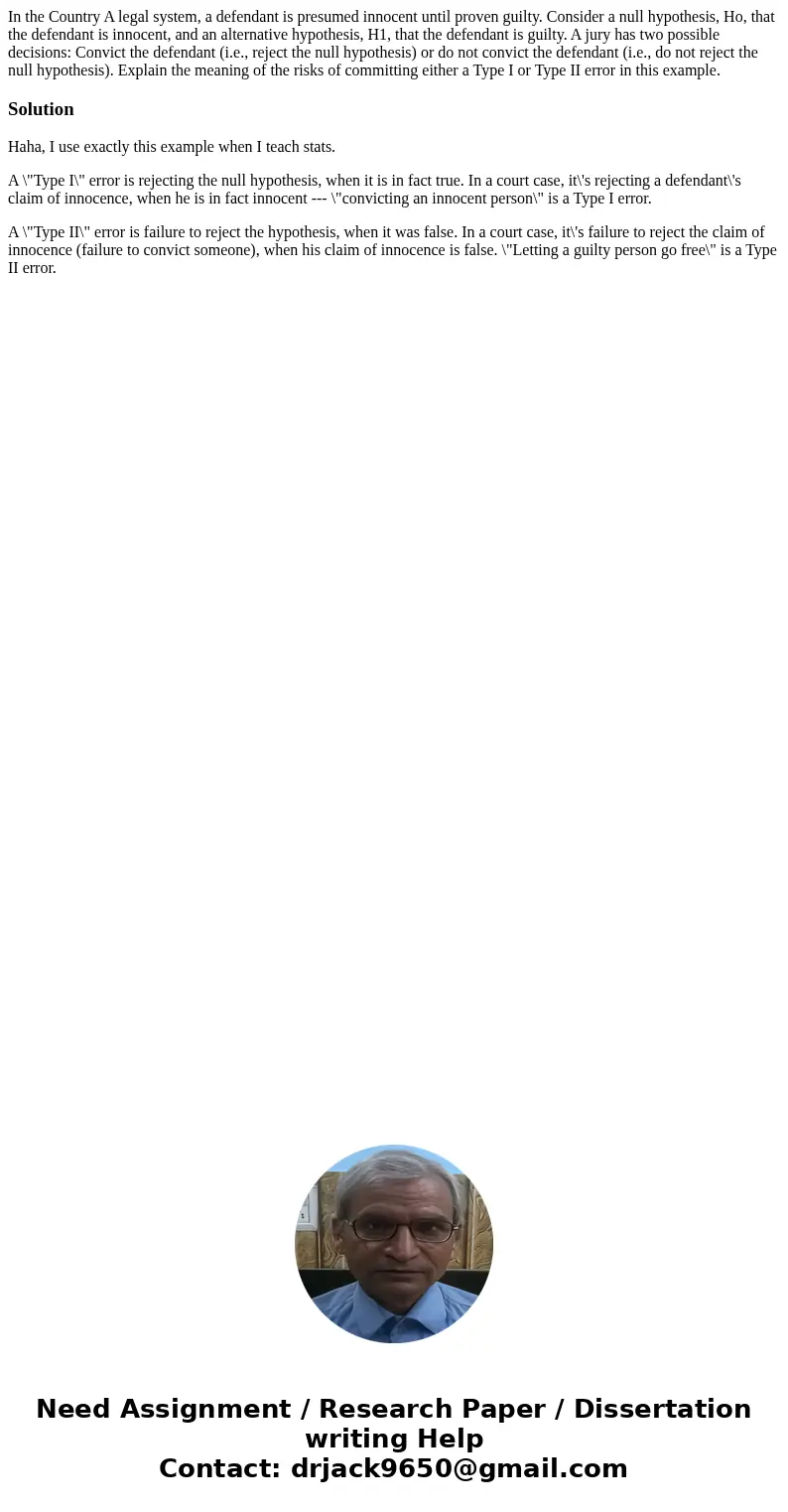In the Country A legal system a defendant is presumed innoce
In the Country A legal system, a defendant is presumed innocent until proven guilty. Consider a null hypothesis, Ho, that the defendant is innocent, and an alternative hypothesis, H1, that the defendant is guilty. A jury has two possible decisions: Convict the defendant (i.e., reject the null hypothesis) or do not convict the defendant (i.e., do not reject the null hypothesis). Explain the meaning of the risks of committing either a Type I or Type II error in this example.
Solution
Haha, I use exactly this example when I teach stats.
A \"Type I\" error is rejecting the null hypothesis, when it is in fact true. In a court case, it\'s rejecting a defendant\'s claim of innocence, when he is in fact innocent --- \"convicting an innocent person\" is a Type I error.
A \"Type II\" error is failure to reject the hypothesis, when it was false. In a court case, it\'s failure to reject the claim of innocence (failure to convict someone), when his claim of innocence is false. \"Letting a guilty person go free\" is a Type II error.

 Homework Sourse
Homework Sourse